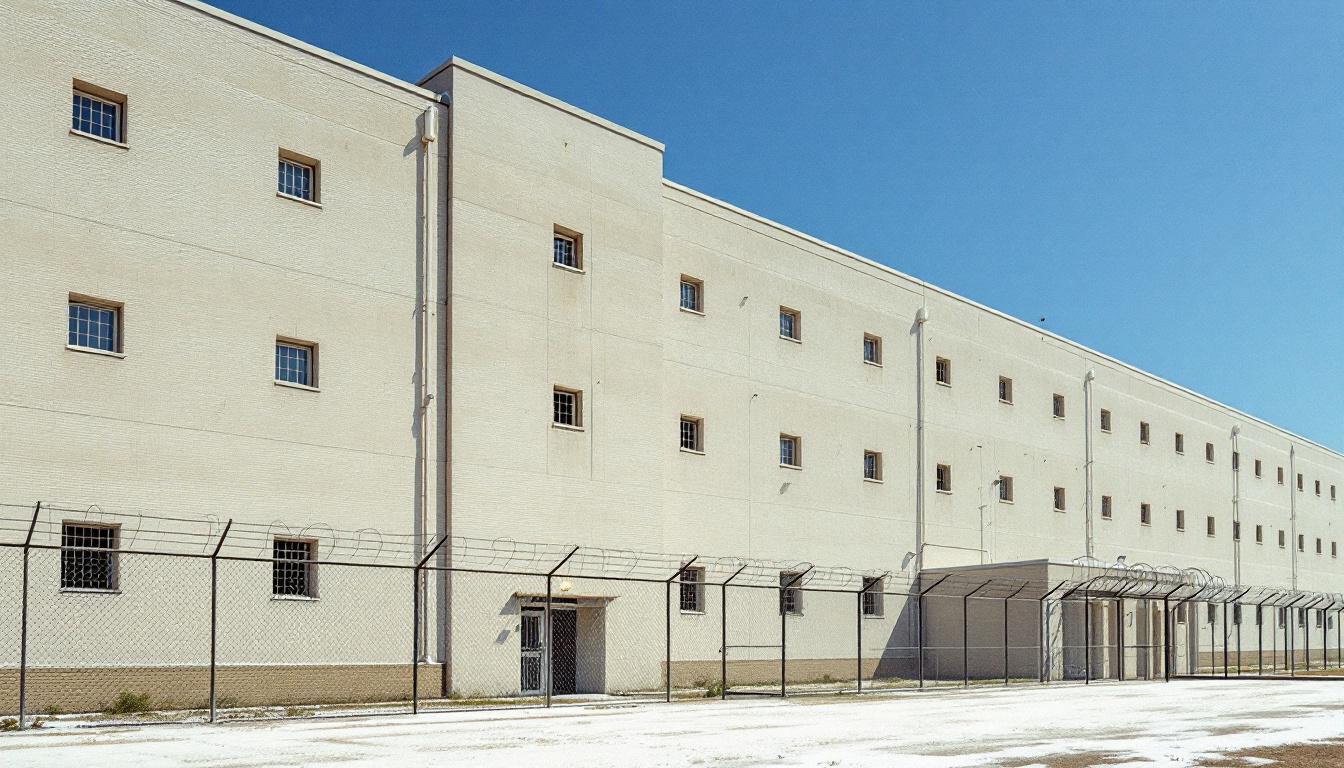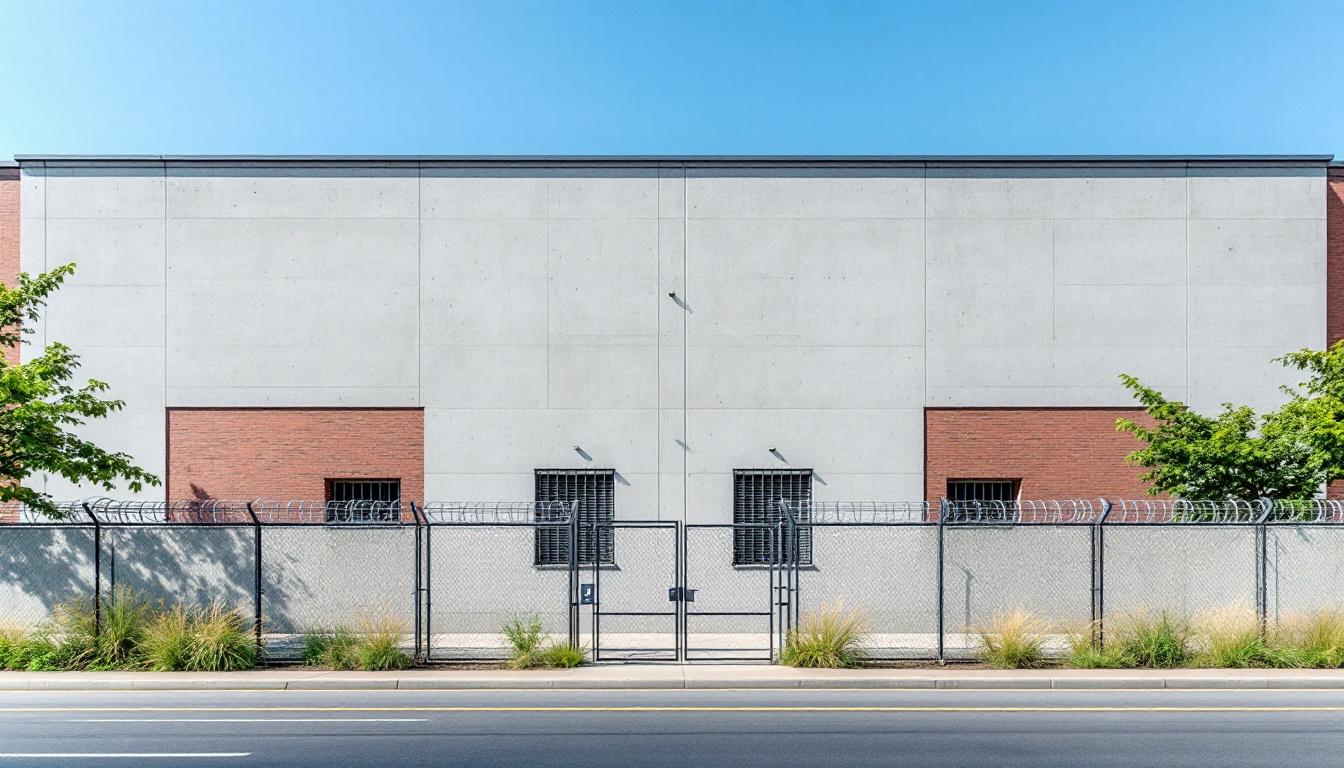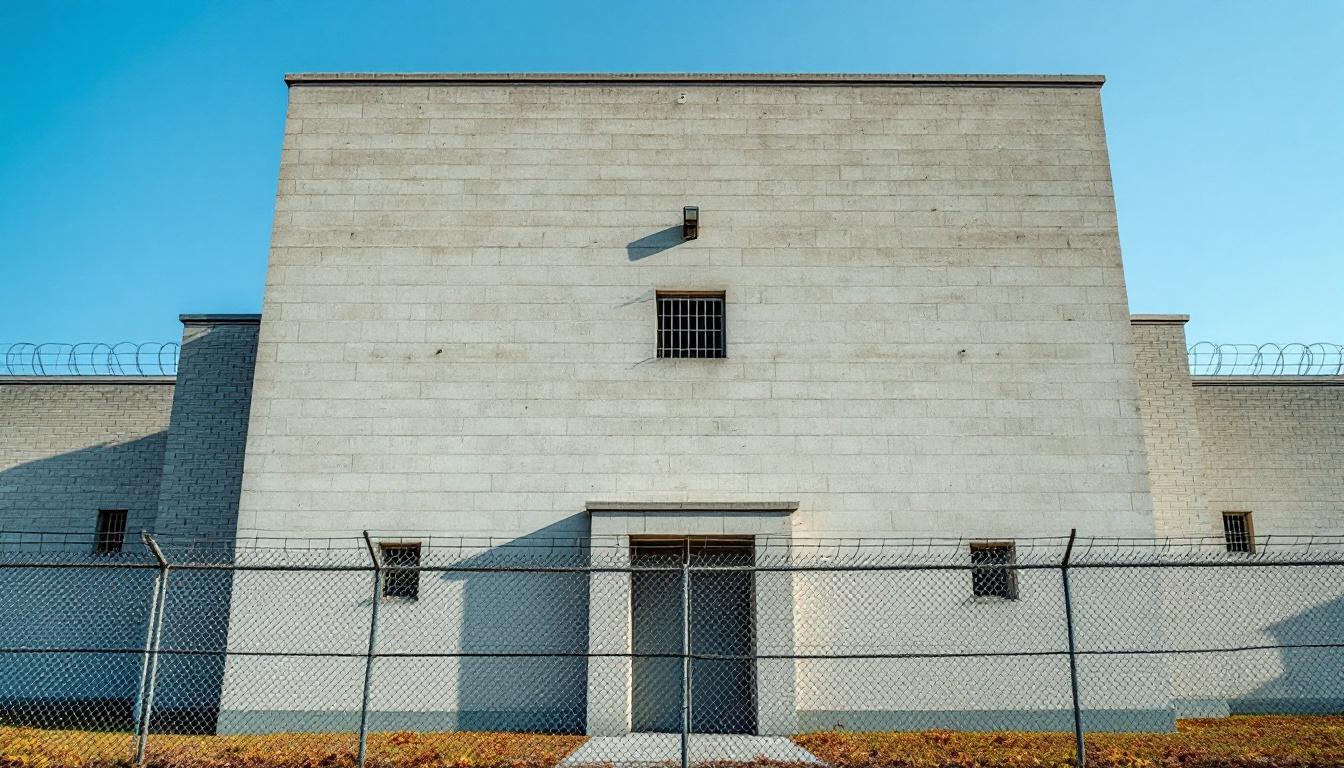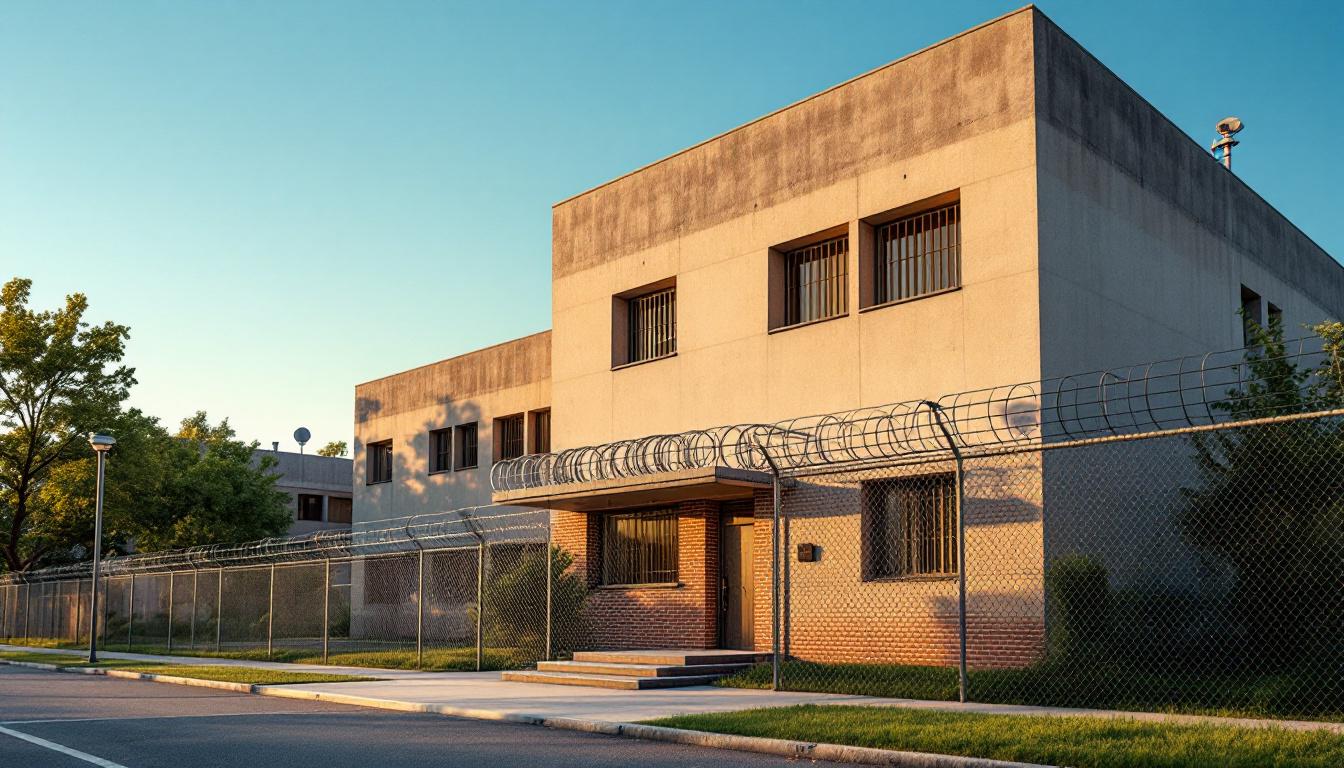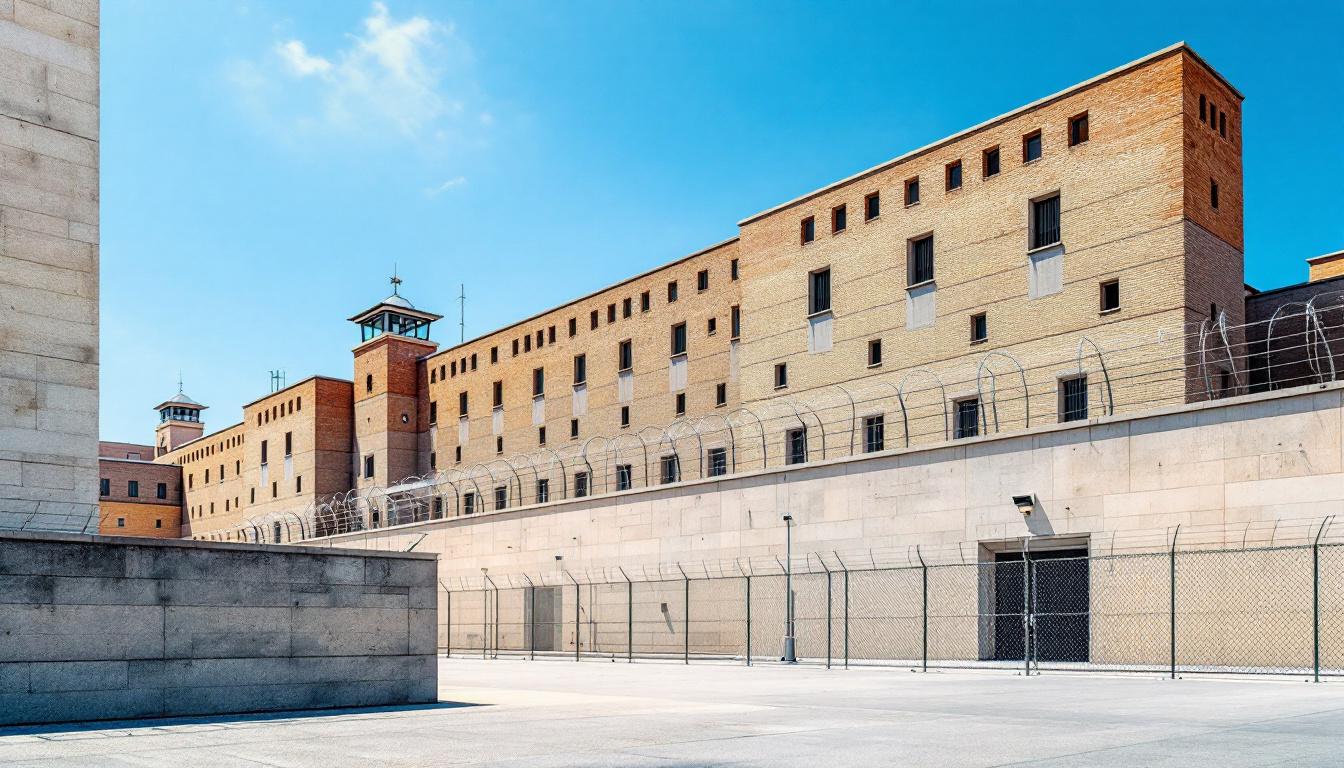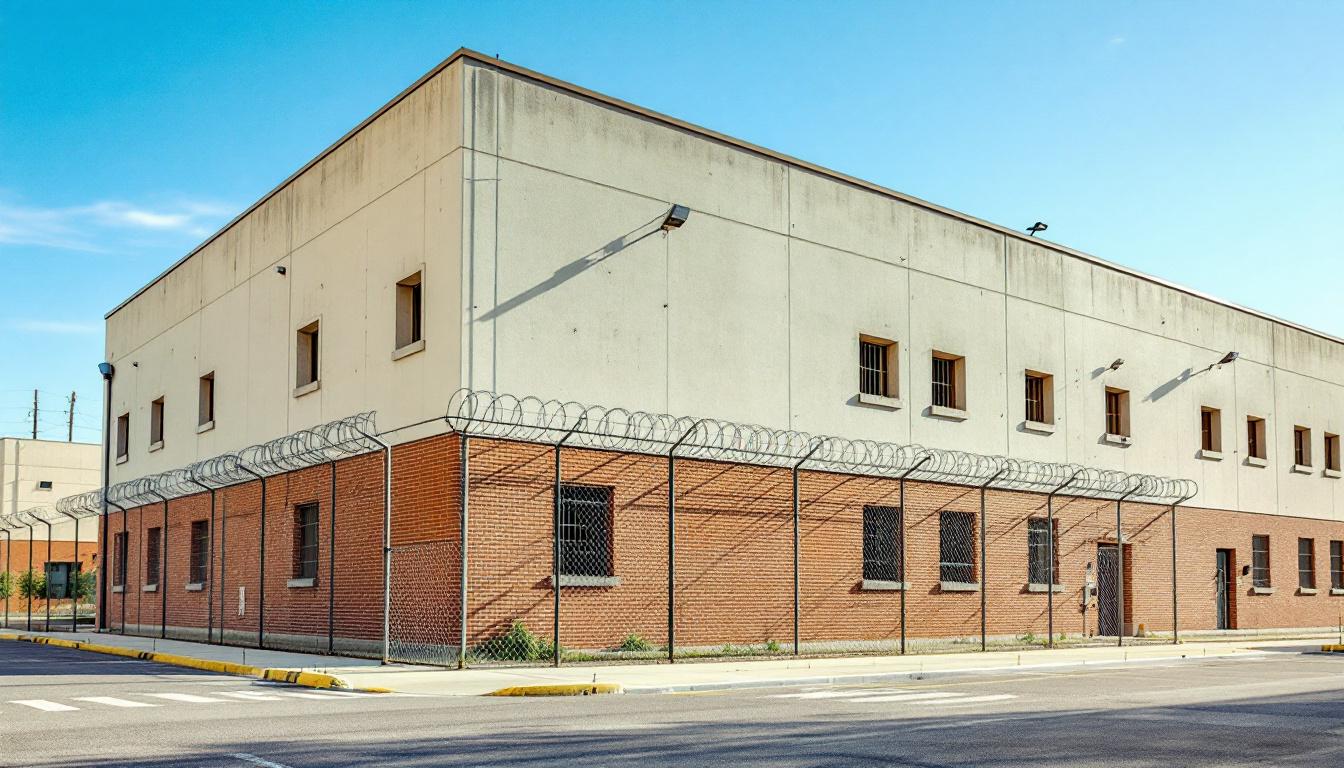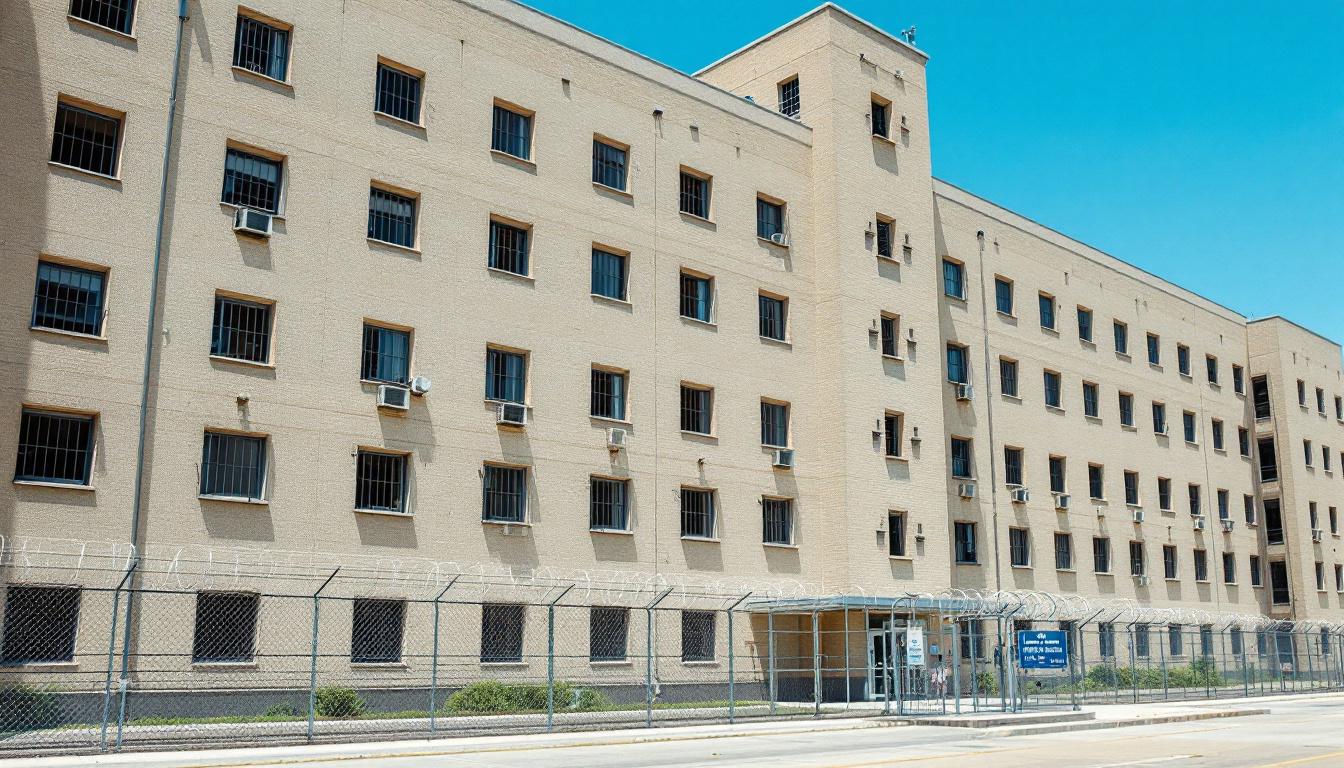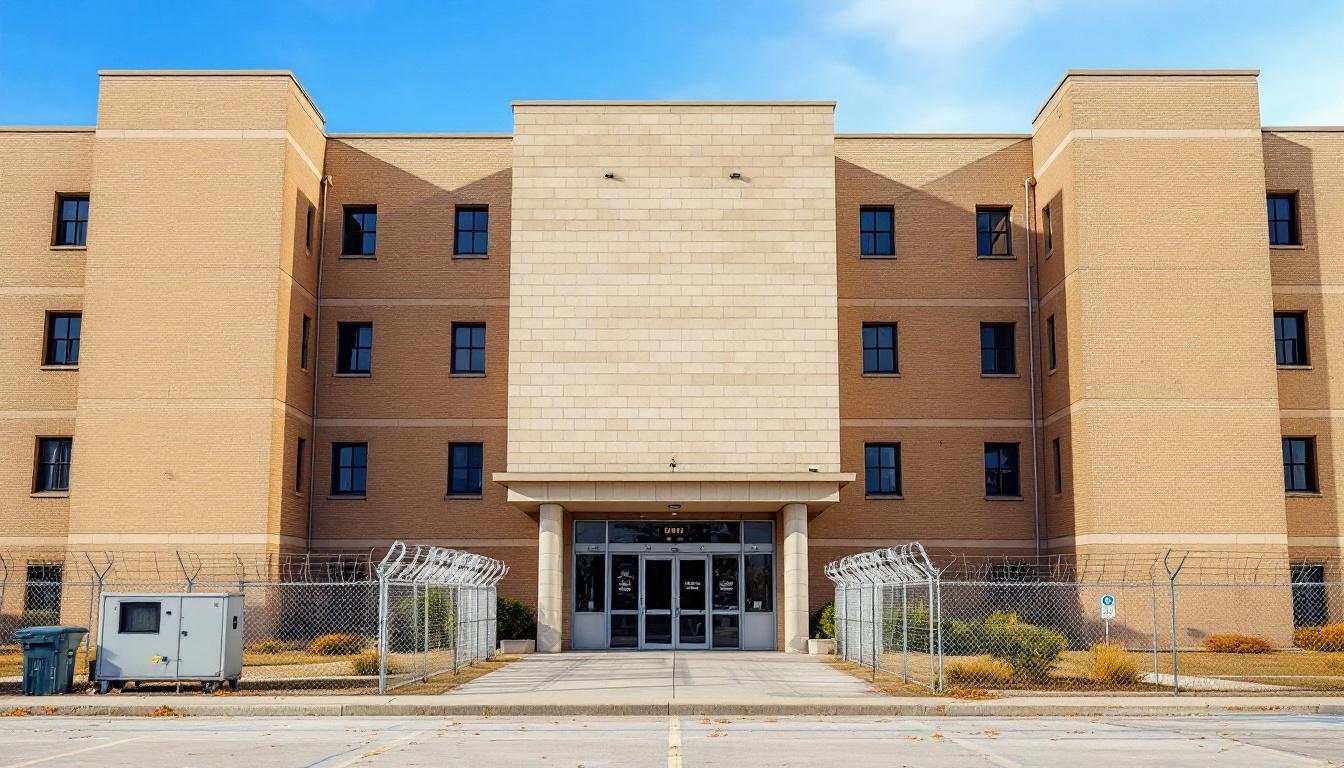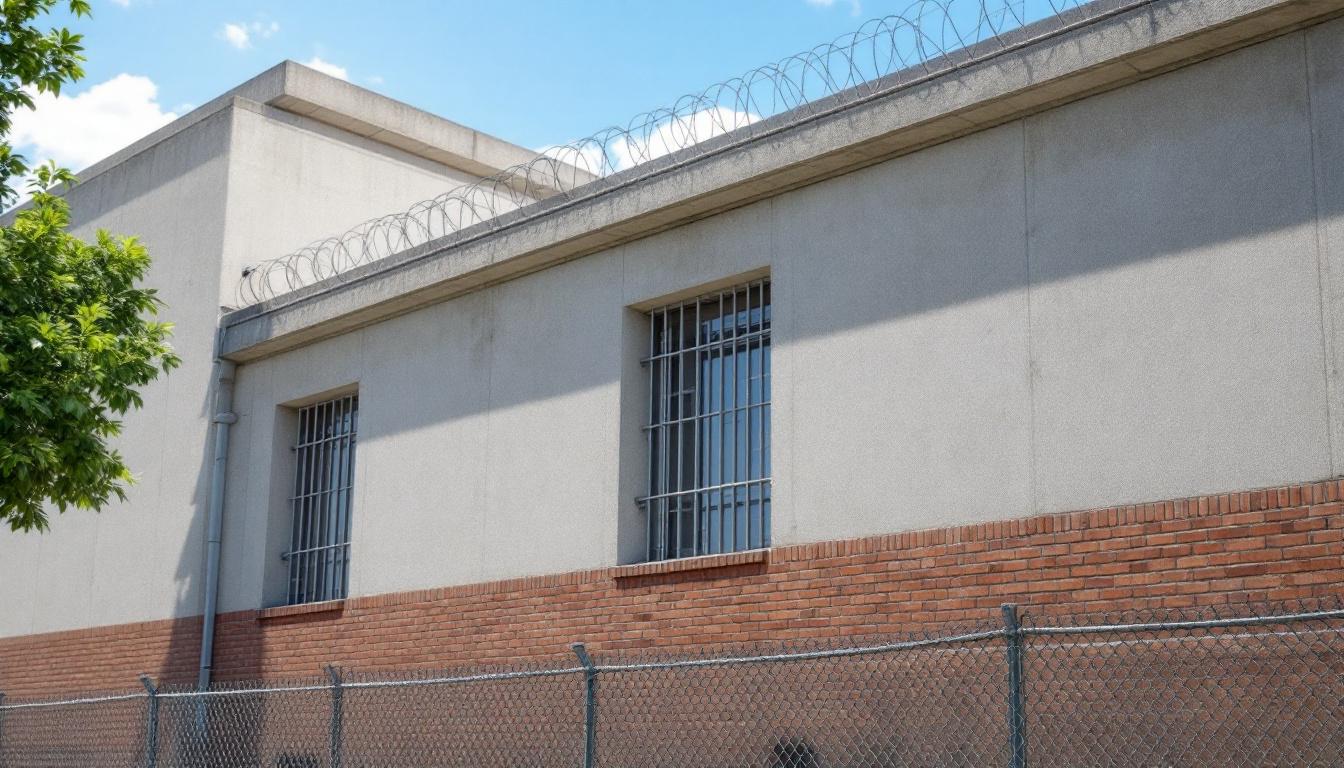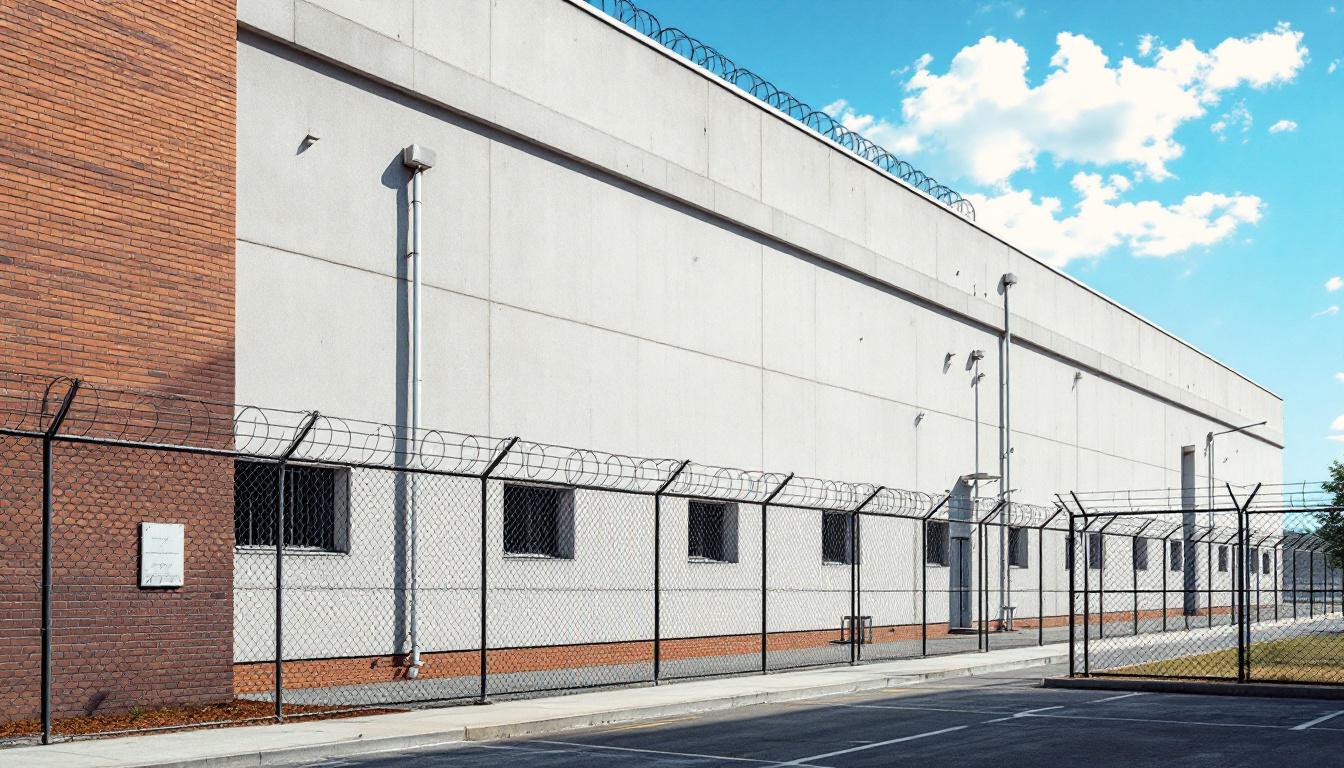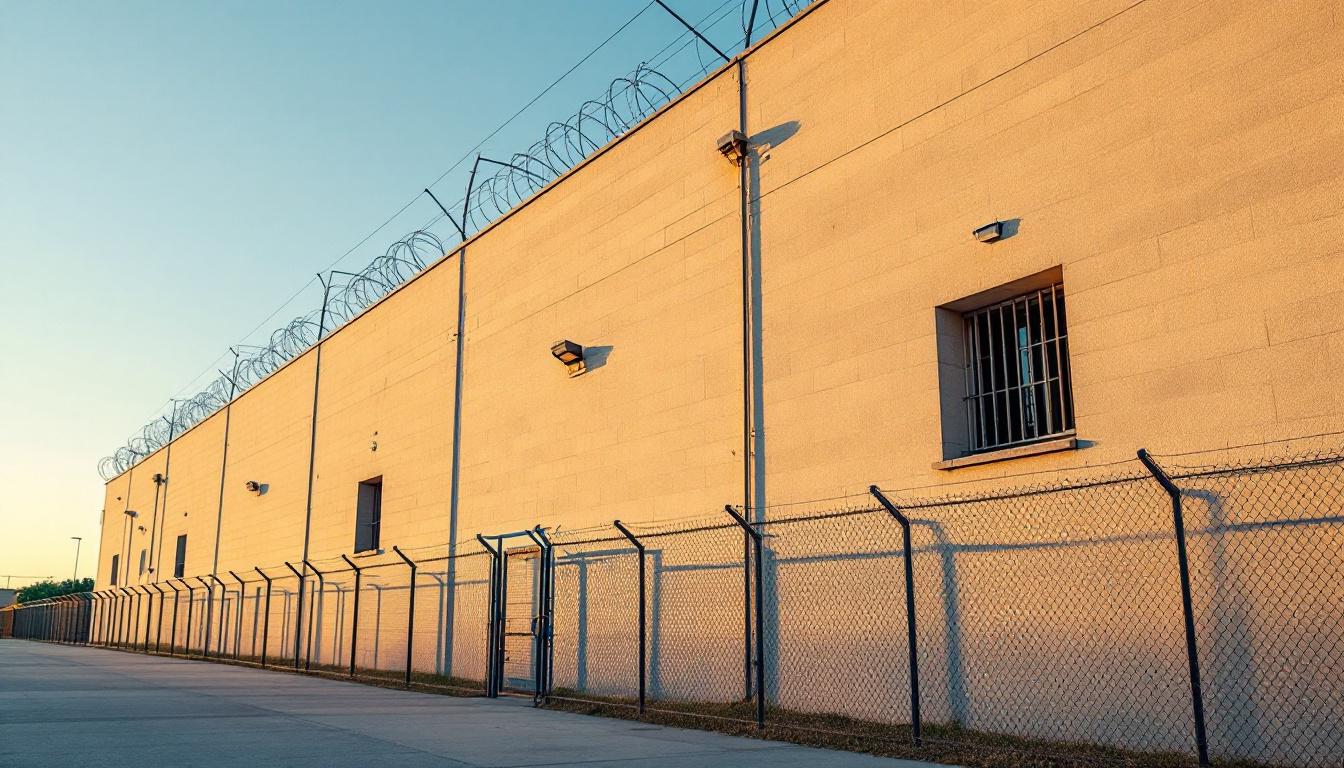
Quick Navigation
How to contact an inmate at South County Detention Center
This comprehensive guide will walk you through how to connect with an inmate at South County Detention Center. Follow the steps below to find an inmate and send letters and photos:
- Search for the inmate using our search tool below
- Create your account or log in to Penmate
- Write your message (up to 6,000 characters)
- Send instantly - inmates receive printed copies daily
Find an Inmate
Search for an inmate to start communicating today
Tip: You can search by first name, last name, or inmate ID number
To contact a person at South County Detention Center start by searching for the person on the official facility website. Perform a search by following these steps:
- Step 1: Enter their first name and last name into the search form and click "Search"
- Step 2: Locate their inmate record
- Step 3: Write down their Inmate ID and any housing information provided
Important! Be sure to enter the person's full name. Nicknames should not be used.
How to Send Messages to Inmates

You can use your phone or computer to send emails, letters, and photos to an inmate. Messages are sent electronically to inmate tablets or kiosks at the facility. If you would like to send a message, start by searching for an inmate at South County Detention Center.
Sending Photos and Postcards

A great way to send love and support to a loved one at South County Detention Center is to send photos and postcards. It only takes a few minutes to send photos from your phone and it makes a huge difference. You can also mail postcards with words of support and inspiration, or design your own postcard for special moments like birthdays and holidays.
Important! Be sure not to send any explicit photos or they may not be approved by the facility. You can also use a photo printing app like Penmate to make sure your photos are printed at the correct size (4x6 or 3x5) and are mailed according to the rules and regulations of South County Detention Center.
Frequently asked questions about South County Detention Center
-
How long does it take to deliver a message?
If you're sending an email message your letter is usually delivered within 24-48 hours. For messages sent via mail you should expect delivery within 3-7 days. All messages will need be approved by South County Detention Center.
-
How much does it cost to send a message to South County Detention Center?
You can send a message free using your phone or mail a message via USPS for the price of a $0.60 stamp and envelope. You can also purchase credits or e-stamps from services starting at $1.99.
-
What services can I use to contact an inmate at South County Detention Center?
Penmate
You can use Penmate to send letters and photos to an inmate from your phone. It's an easy way to stay in touch during your loved one's incarceration. Use the inmate locator to find an inmate's location and contact information, then you can send messages within a few minutes.
Securus messaging
Securus may be another option for communicating with an inmate at South County Detention Center. You can create a friends and family account and purchase credits to send messages. All messages will be reviewed and must be approved by the facility.
JPay
Some county jails and state prisons may support sending messages with JPay. You must register an account with the system, find your loved one, and purchase stamps to send messages. For some locations you can also attach photos.
Smart Jail Mail
You may also check if Smart Jail Mail is available at South County Detention Center. Smart Jail Mail is operated by Smart Communications and has contracted with some state and county jails. After purchasing credits, your messages and photos are sent to the facility, printed out, and then handed out to your loved one.
-
What is the mailing address of South County Detention Center?
Mailing address:
South County Detention Center
1960 W Scranton Ave
Porterville, CA 93257
Phone: (559) 782-7800Business hours:
- Monday: Open 24 hours
- Tuesday: Open 24 hours
- Wednesday: Open 24 hours
- Thursday: Open 24 hours
- Friday: Open 24 hours
- Saturday: Open 24 hours
- Sunday: Open 24 hours
-
What are the visiting hours at South County Detention Center?
Visiting hours at South County Detention Center vary by housing unit and security level. Generally, visits are scheduled on weekends and holidays, with some facilities offering weekday visits. Contact the facility directly at (559) 782-7800 or check their website for the current visiting schedule. Visits typically last 30-60 minutes and must be scheduled in advance.
-
What items are prohibited when sending mail to South County Detention Center?
Prohibited items typically include: cash, personal checks, stamps, stickers, glitter, glue, tape, staples, paperclips, polaroid photos, musical or blank greeting cards, hardcover books, magazines with staples, and any items containing metal or electronics. Only send letters on plain white paper with blue or black ink. Photos must be printed on regular photo paper (no Polaroids). Always check with South County Detention Center for their specific mail policies.
-
How do I send money to an inmate at South County Detention Center?
You can send money to an inmate at South County Detention Center through several methods: 1) Online using JPay, Access Corrections, or the facility's approved vendor, 2) Money orders mailed directly to the facility with the inmate's name and ID number, 3) Kiosks located in the facility lobby, or 4) Over the phone using a credit or debit card. Fees vary by method, typically ranging from $2.95 to $11.95 per transaction.
-
Can I schedule a video visit with an inmate at South County Detention Center?
Many facilities now offer video visitation as an alternative to in-person visits. At South County Detention Center, video visits may be available through services like Penmate, Securus Video Connect, GTL, or ICSolutions. Video visits typically cost $10-20 for 20-30 minutes and must be scheduled in advance. You'll need a computer or smartphone with a camera and reliable internet connection. Contact the facility for their specific video visitation policies and approved vendors.
-
What identification do I need to visit an inmate at South County Detention Center?
All visitors must present valid government-issued photo identification such as a driver's license, state ID, passport, or military ID. Minors must be accompanied by a parent or legal guardian who can provide the minor's birth certificate. Some facilities require visitors to be on the inmate's approved visitation list, which may require a background check. Contact South County Detention Center for specific ID requirements and visitor approval procedures.
-
How can I find out an inmate's release date?
To find an inmate's release date at South County Detention Center, you can: 1) Use the online inmate search tool if available, 2) Call the facility's records department, 3) Contact the inmate's case manager or counselor, or 4) Have the inmate provide this information during a call or visit. For privacy reasons, some facilities only release this information to immediate family members.
Facility Overview
Contact Information
South County Detention Center1960 W Scranton Ave
Porterville, CA 93257
Phone: (559) 782-7800
Official Website

About South County Detention Center
Within the agricultural heart of California’s Central Valley, Visalia serves as home to the South County Detention Facility, CA, where the surrounding community’s values of hard work and second chances shape the institution’s daily operations. This CA correctional facility operates through a systematic approach that emphasizes structured programming and gradual skill development, recognizing that meaningful change typically occurs through consistent, process-oriented interventions rather than isolated events.
The facility’s operational philosophy centers on creating pathways for residents services that may include educational opportunities, vocational training, and behavioral programming designed to address the underlying factors that often contribute to criminal behavior. Staff members generally work through established protocols that prioritize safety while maintaining an environment where personal growth can occur. The detention center typically offers basic educational services, substance abuse programming, and life skills development, though specific offerings may vary based on available resources and individual needs assessments.
As part of the broader Pacific region’s correctional network, this Visalia-based facility serves the surrounding south CA area through a commitment to both public safety and rehabilitation principles. The institution generally maintains connections with local service providers and community organizations that may assist with reentry planning, though residents and their families should verify current program availability directly with facility staff. Through this community-centered approach, the facility works to balance its detention responsibilities with opportunities for positive change that may benefit both individuals and the wider Central Valley region.
Programs & Services
Educational initiatives form the cornerstone of transformative opportunities at South County Detention Facility, where residents can pursue adult basic education pathways that may deliver foundational literacy and numeracy skills essential for successful reintegration. The facility’s comprehensive approach typically emphasizes skill-building across multiple domains, recognizing that meaningful change often requires addressing educational gaps while simultaneously developing practical competencies. This multifaceted philosophy creates an environment where residents can work toward personal growth through structured learning experiences that extend well beyond traditional classroom settings.
Academic programming often includes adult basic education courses designed to help residents earn their high school equivalency credentials, while vocational training initiatives may deliver hands-on instruction in trades that align with regional employment opportunities. These educational pathways typically provide residents with marketable skills that can translate directly into post-release employment prospects. Additionally, vocational training programs often focus on practical skills development, allowing participants to gain experience in areas that may enhance their economic stability upon reentry into the community.
Support services complement the educational framework through rehabilitation programs that typically address underlying issues contributing to criminal behavior, while volunteer programs may connect residents with community mentors who provide guidance and encouragement. Veteran services often include specialized programming tailored to the comprehensive needs of formerly enlisted residents, recognizing their distinct experiences and challenges. Additionally, arts and crafts initiatives may deliver creative outlets that promote emotional expression and stress management, providing residents with therapeutic activities that can contribute to overall well-being and personal development throughout their time at the facility.
Daily Life & Visitation
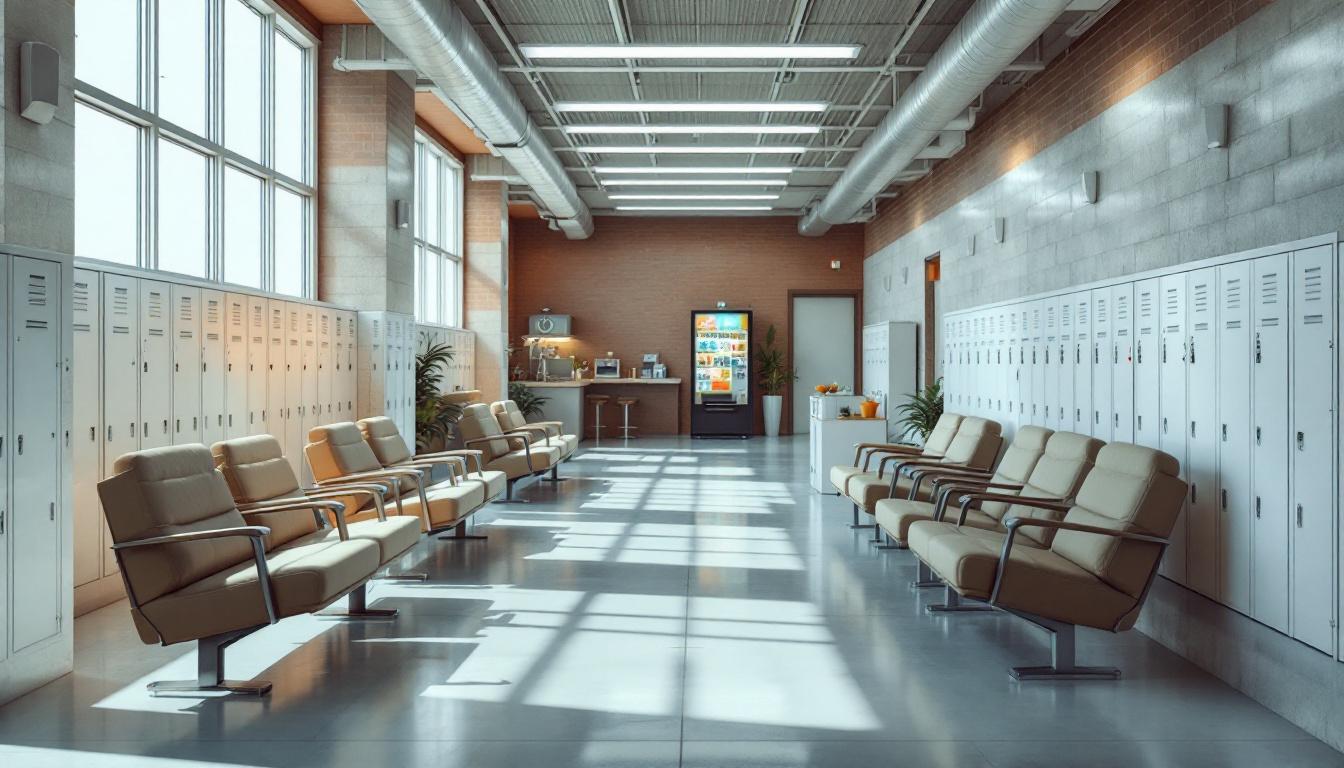
Structured wake-up calls currently mark the beginning of each day, with residents following established routines that continue to provide predictable frameworks for daily activities. The facility typically organizes residents’ schedules around meal times, work assignments, and programming periods that deliver consistent structure throughout the week. Generally, mornings begin with head counts and preparation for breakfast, followed by work details or educational programming that usually extends through the midday hours.
Additionally, living accommodations at the facility typically house residents in dormitory-style units or individual cells, depending on classification levels and available space. Residents generally receive three meals daily in designated dining areas, with menus that often rotate weekly to provide variety within nutritional guidelines. Personal property allowances usually include basic clothing items, hygiene supplies, and limited personal effects that residents may purchase through the commissary system.
While structured programming delivers educational and vocational opportunities during weekdays, recreational activities typically include outdoor exercise periods, television viewing in common areas, and library access when available. Family connections continue through scheduled visitation periods and telephone privileges that generally allow residents to maintain contact with loved ones. Work assignments within the facility often include kitchen duties, maintenance tasks, and cleaning responsibilities that provide residents with daily structure and may offer modest compensation for their participation.
Ready to Connect?
Start communicating with your loved one today
Search for an Inmate
